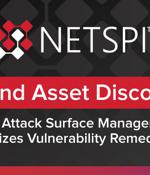Security News

The Council's inaugural Cloud Data Management Benchmark Report, based on responses from more than 250 data professionals in more than 30 countries across the globe, found that less than half of the companies it polled trust cloud security and reliability enough to store their more crucial data there. The EDM Council benchmark study found that among the companies polled, cloud data management is still in the early stages, with respondents characterizing the status of their data management for cloud-deployed data in "Developmental" or "Defined" stages and few at the "Achieved" or "Enhanced" stages of maturity.

As vulnerabilities continue to rise and security evolves, it is becoming increasingly apparent that conventional vulnerability management programs are inadequate for managing the expanding attack surface. As a result, many security teams are scrambling to adopt modern vulnerability management programs that are capable of identifying and thwarting contemporary vulnerability-based threats.

Leading analyst firm Gartner Research describes the solution: "By 2026, organizations prioritizing their security investments based on a continuous exposure management program will be 3x less likely to suffer from a breach." IT and security teams constantly face threat exposures, and they must proactively address critical security gaps in their exposed assets.

This policy from TechRepublic Premium provides guidelines for the consistent and secure management of passwords for employees and system and service accounts. These guidelines include mandates on how passwords should be generated, used, stored and changed as well as instructions for handling password compromises.

Attack surface expansion is a byproduct of doing business today, especially for enterprises that rely on the cloud. This can result in attack surface exposures, both known and unknown, giving malicious actors many pathways to gain entry to networks.

Syxsense now offers more IT and endpoint management functions, including mobile device management, automation, remediation and zero trust. Syxsense recently unveiled its all-encompassing suite - Syxsense Enterprise, which comes with patch and vulnerability management, MDM, zero trust, automation and orchestration capabilities, and remediation.

Given attack surface sprawl and evolving threats, many organizations are embracing attack surface management tools to discover and address critical exposures. Asset discovery is an important capability to have, and one that's helping to drive the adoption of attack surface management tools and services.

Learn how NetSPI's always-on solution allows companies to improve visibility, inventory, and understanding of known and unknown assets and exposures on their global attack surface and distill signal from noise. The discovery of assets and vulnerabilities is table stakes.

As it evolves into a critical component of threat and exposure management strategies, it's worth examining why attack surface management has grown to become a key category, and why it will continue to be a necessity for organizations worldwide. The attack surface includes any IT asset connected to the internet - applications, IoT devices, Kubernetes clusters, cloud platforms - that threat actors could infiltrate and exploit to perpetuate an attack.

Our desire for innovation, speed and efficiency has birthed new and complex security challenges that all in some way or another revolve around securing how we access resources. Because of this, effective access management now plays a more critical role in securing the modern workplace than ever.